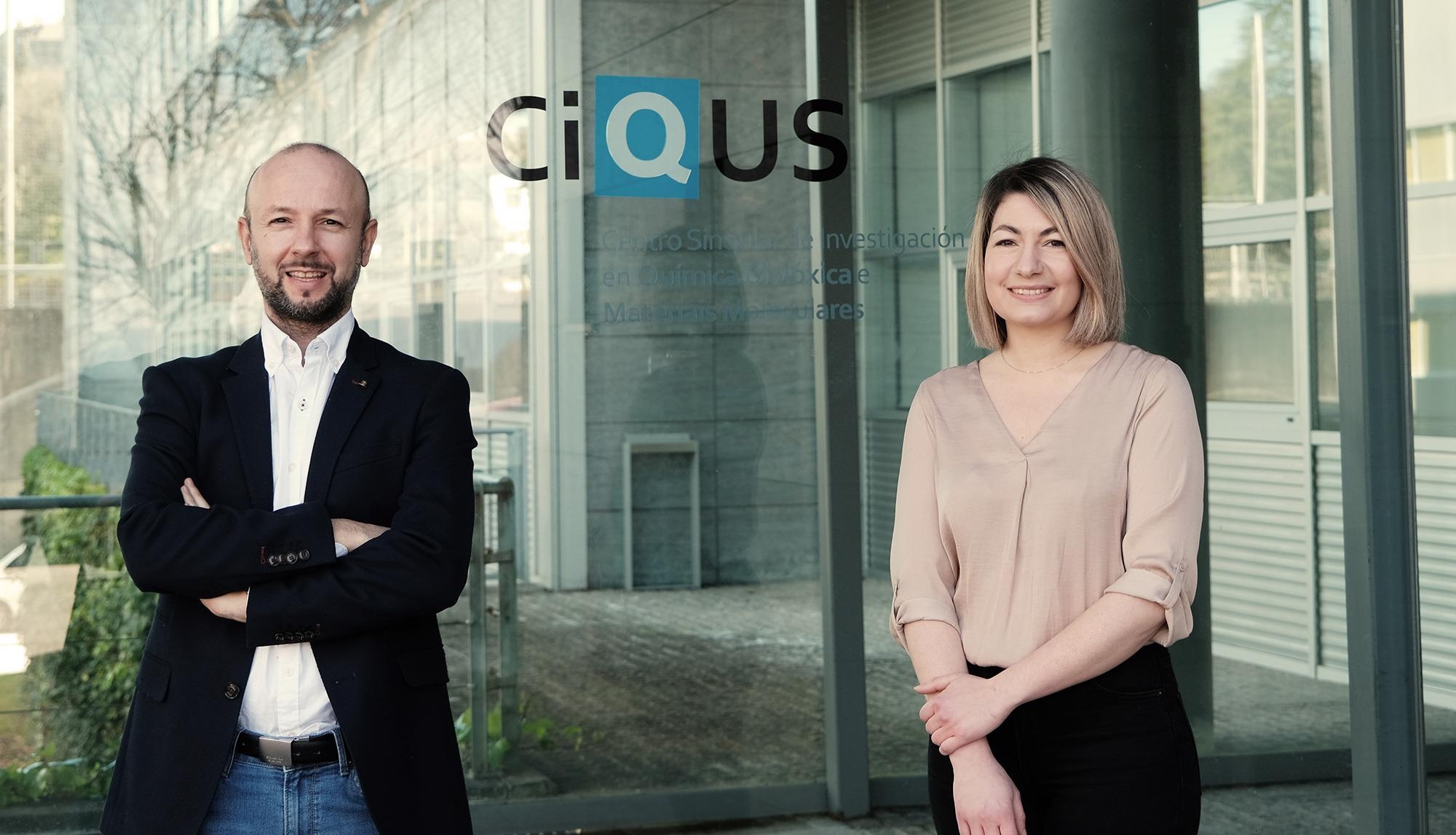Reviewed by Danielle Ellis, B.Sc.Mar 24 2022
Since several water-soluble bioactive molecules could not pass through the cell membrane, the impermeable molecules’ internalization into cells is the challenge in drug development today. Artificial transporters, like lipids, polymers, or cationic penetrating peptides, have been developed to enable the cell entry of these molecules.
 Prof. Javier Montenegro and Giulia Salluce. Image Credit: CiQUS.
Prof. Javier Montenegro and Giulia Salluce. Image Credit: CiQUS.
Until now, the majority of these carriers have been designed based on one specific property that lets them pass through the lipid bilayer, which is known as amphiphilicity. Amphiphilic molecules have distinguished regions that enable them to interact with the lipid membrane and water-soluble cargo.
An identical molecular amphiphilicity, which lets them interact with the amphiphilic membrane, has been shared by all membrane carriers known so far. Nevertheless, such transporters generally exhibit drawbacks owing to inherent characteristics of amphiphilic molecules, for example, the toxicity linked to their detergent-like behavior that can harm the cell membranes or their aggregation tendency that could limit the concentrations at which they could be beneficial.
The recent research by scientists from the Centre for Research in Biological Chemistry and Molecular Materials (CiQUS, USC), together with Jacobs University (Bremen, Germany), presents a new membrane carriers’ class that leaves behind the amphiphilic paradigm. The study was published in the journal Nature.
Such novel carriers are founded on halogenated dodecaborate cluster anions, with hardly 24 atoms making a globular shape that have an excellent water solubility and a negative charge.
Such clusters also exhibit affinity for lipid membranes owing to their superchaotropic nature, in spite of their anionic charge and the lack of differentiated domains. This chaotropic feature could be regarded as a capacity of these clusters to disorder water molecules. Currently, this is shown to enable hydrophilic cargos’ dehydration and thereby enable them to move through the hydrophobic membranes.
Without encapsulating or forming aggregates with them, such clusters could interact with hydrophilic cargos. With the help of model vesicles, in the team of Prof. Werner Nau (Jacobs University, Bremen), it was identified that the tiniest, and least chaotropic, cluster (B12H122–) was not active, whereas the biggest and most chaotropic one (B12I122–) interacted a lot with the lipid membrane.
Dodecaborate clusters, however, with balanced chaotropicity, like the halogenated B12Cl122– and B12Br122–, triggered the different cargos’ translocation through the lipid bilayer without causing damage to the integrity of the membrane. Especially, the brominated B12Br122– become the ideal candidate of a novel class superchaotropic boron carriers.
These new carriers show very distinctive transport properties. In contrast to classical amphiphilic transporters, their activity was not affected by the sequence of cluster and cargo addition to the vesicles, or the vesicle’s membrane charge.”
Dr Andrea Barba-Bon, Study Co-First Author and Researcher, Jacobs University
The carrier was capable of delivering a broad variety of cargos, which range from tiny molecules to huge peptides, except the negatively charged molecules. Furthermore, superchaotropic boron clusters exhibited carrier activity in model vesicles, as well as in the alive cells.
The clusters can successfully transport within alive cells, various molecules into cells as described by the team of Prof. Javier Montenegro (CIQUS, USC). A completely efficient phalloidin cargo, which is an impermeable cyclic peptide conventionally used for labeling the cytoskeleton of fixed cells, was able to be delivered by boron clusters into the cytosol of alive cells and staining the actin cytoskeleton of many cellular kinds.
The bioactive cargos’ wide spectrum that can be transported also comprised the low penetrable PROTAC dBET1 or the antineoplastic monomethyl auristatin F, internalized two or three times more successfully in the boron cluster’s presence.
We have identified a new class of transporters that can be used to deliver many different molecules into cells. Superchaotropic anions are a new tool for the transport of hydrophilic molecules into cells, whose potential is only starting to be explored.”
Giulia Salluce, Study Co-First Author and PhD Student, Montenegro’s Group, Center for Research in Biological Chemistry and Molecular Materials, University of Santiago de Compostela
Source:
Journal reference:
Barba-Bon, A. (2022) Boron clusters as broadband membrane carriers. Nature. https://doi.org/10.1038/s41586-022-04413-w.